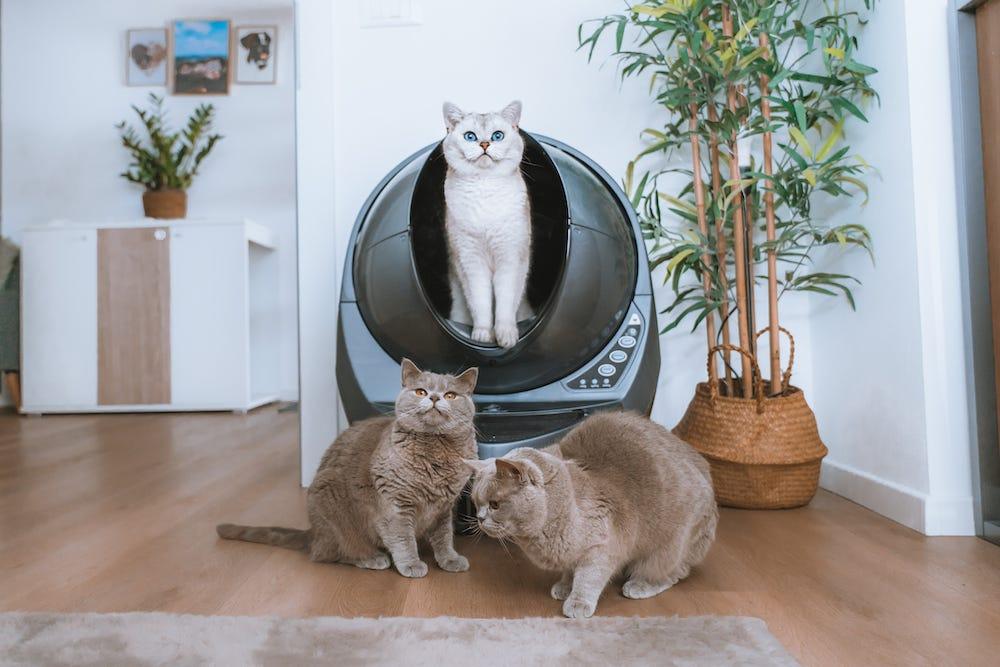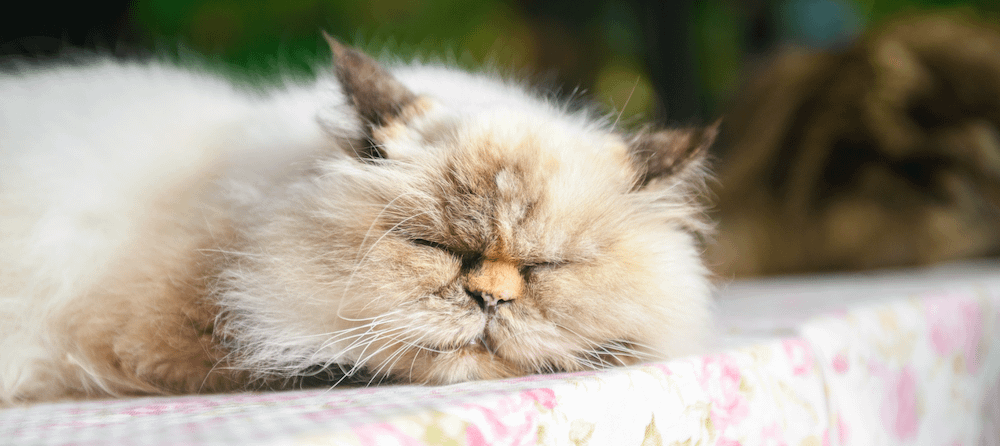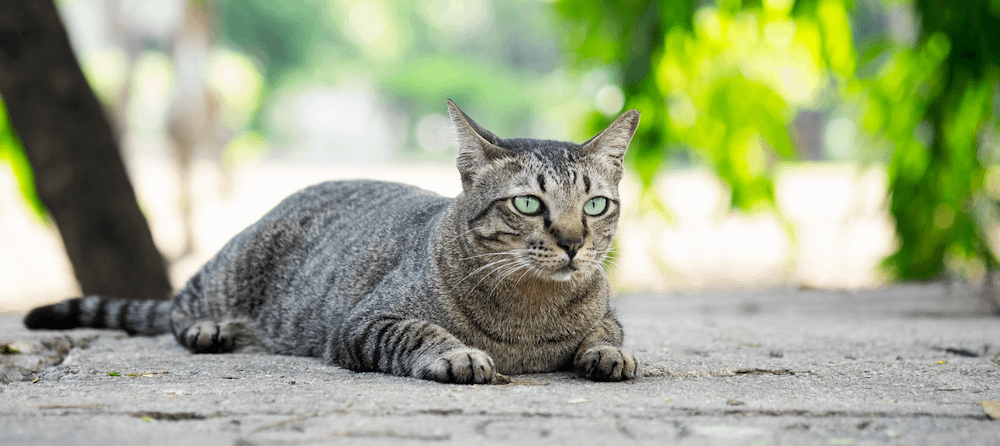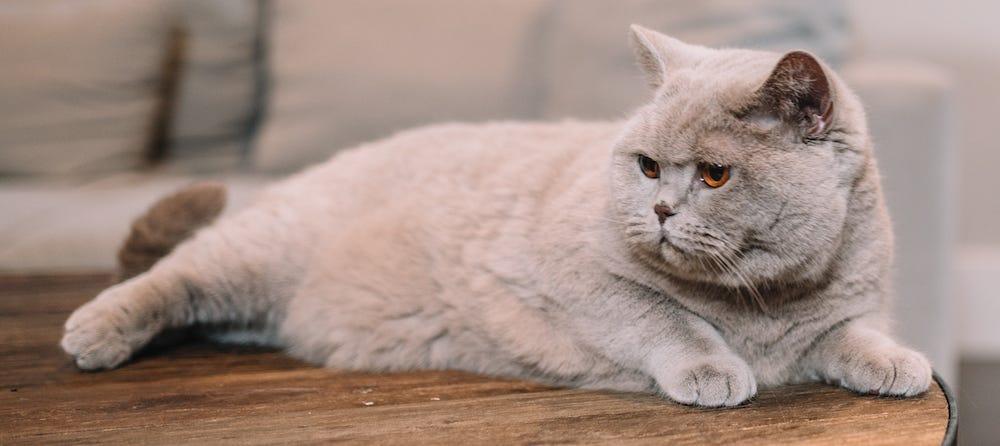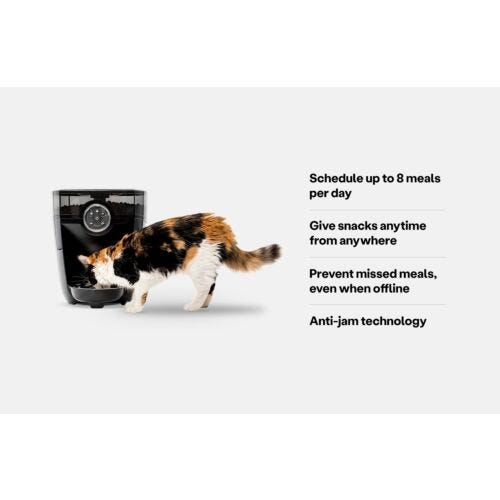Pudgy, docile, with a hint of mischief—if the British Shorthair cat seems straight out of a fairy tale, there’s a good reason! This precious breed inspired Lewis Carroll, the author of “Alice in Wonderland,” and his illustrator, John Tenniel, to create the Cheshire Cat.
The British Shorthair is known for being undemanding and independent—so if you are looking for a cat that wants your attention all the time, this is not the kitty for you.
This cat needs time to build trust before fully opening up to their humans. Patience is key when it comes to the British Shorthair cat. You’ll notice that once you’ve gained their trust, they will be devoted to you and prefer spending time by your side.
| British Shorthair cat | ...at a glance |
|---|---|
| Personality | Easygoing, calm, devoted |
| Life expectancy | 12-16 years |
| Weight | 9-18 lbs |
| Coat & colors | Short, plush; "British Blue," various colors & patterns |
| Energy level | Medium |
| Affection level | High |
| Friendliness | Medium |
| Shedding level | Medium |
| Required grooming | Low |
Overview of the British Shorthair cat
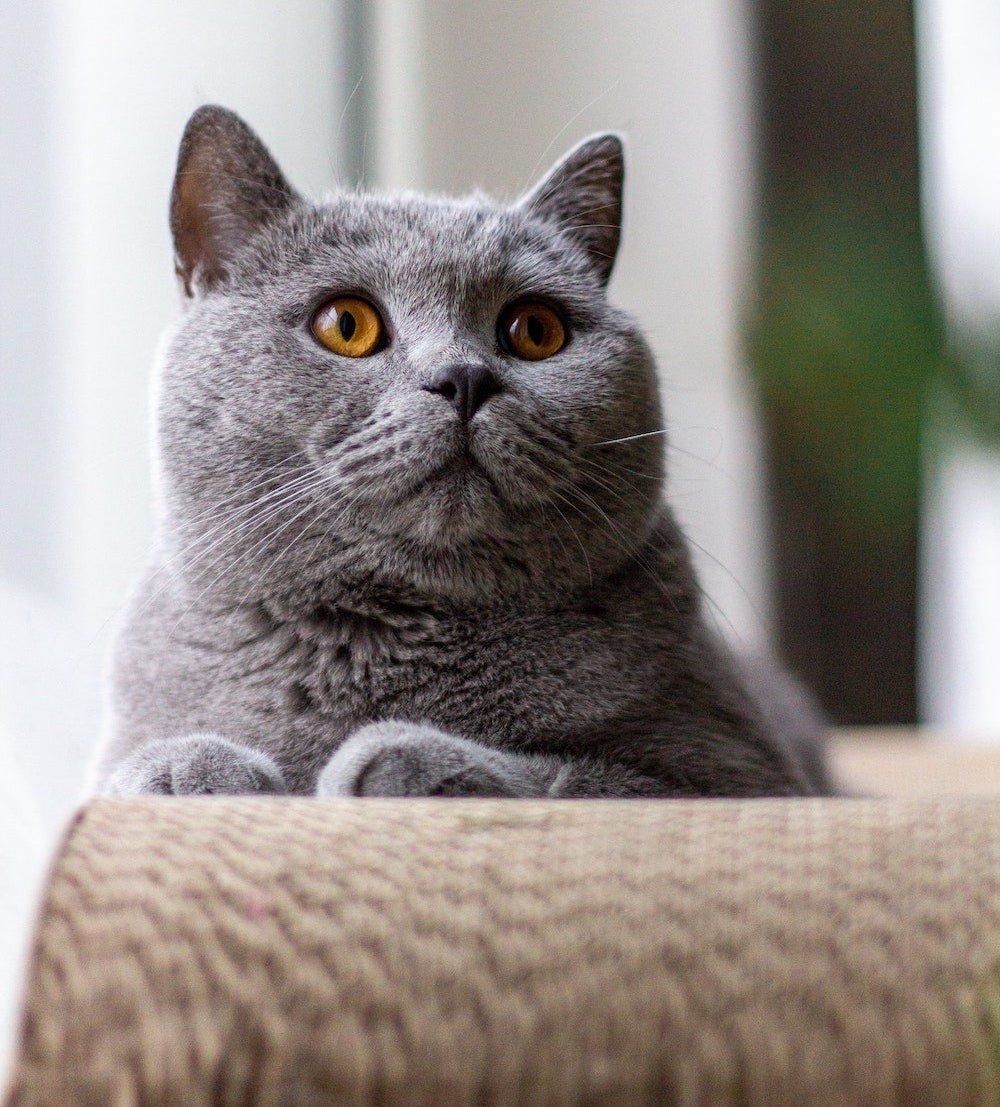
British Shorthair cats are typically compact, medium to large-sized felines that are well-balanced and sturdy. They are often described as heavy-boned, with round paws and otherwise unexaggerated features.
They are blessed with a round head and adorable chubby cheeks.
Weight
A British Shorthair cat will usually grow to a medium or large size, with males typically larger than females. It may take several years for a British Shorthair to reach their full size. In general, these cats weigh between 9 and 18 pounds. With proper nutrition and the right amount of exercise, your British Shorthair can maintain a healthy weight.
Length
A British Shorthair cat typically ranges from 22 to 25 inches in length from their heads to the tips of their tails.
Coat
The British Shorthair cat is named after two things: where they originated and their coat length. Their coats are short, dense, and plush.
Their coat colors and patterns include blue (grey), calico, white, tabby, cream, red, lilac, tortoiseshell, cinnamon, and fawn. However, not all colors are accepted by every cat show organization.
The “Blue British” is the most common of British Shorthairs and has many fans (including us!).
Life expectancy
British Shorthair cats typically live for 12 to 16 years. With proper nutrition and exercise (and plenty of love), they can live a long and healthy life.
Two of the most common health problems for this breed are hypertrophic cardiomyopathy (HCM) and hemophilia B. A DNA test can help identify carriers prone to passing on these conditions, along with polycystic kidney disease.
History of the British Shorthair cat
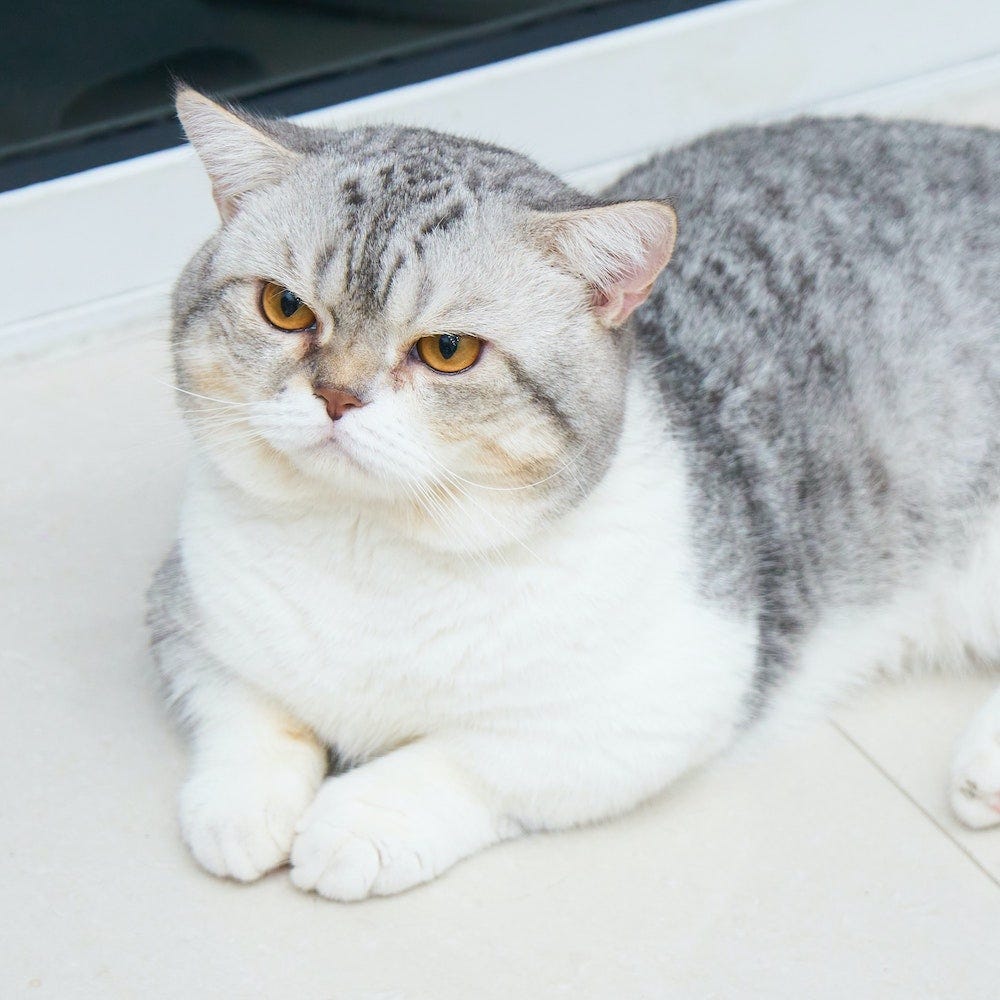
When invading the British Isles, the Romans brought common street cats that mated with local European wildcats, resulting in the earliest ancestors of the British Shorthair.
The British Shorthair cat was a working breed from the start, and many lived on farms, helping to maintain rodent populations. The early versions of this breed looked very different from the British Shorthair cat today. After years of breeding with European wildcats, which likely had longer fur to protect themselves from the harsh climate, the British Shorthair was established.
People began to recognize and admire the British Shorthair cat during the 1800s. Not only did they rid the house of rodents, but they became very loyal companions during this time. They were regarded as “alley cats” but soon made their way into homes, becoming family members. They could be found throughout Britain, in both the countryside and in cities.
Breed recognition
Cat enthusiast Harrison Weir worked hard to get the British Shorthair recognized as its own breed, but exotic longhair cats gained popularity and caused the British Shorthair breed to decline. Breeders bred this shorthair cat to Persians to achieve a British Longhair during World War I.
WWI and WWII decimated many of the European cat breeds. An effort was made to save the British Shorthair breed and work towards repopulation. It took decades, but their numbers grew once more, and the breed was saved.
The United States didn’t take much interest in the British Shorthair cat breed until the 1960s. In 1970, the ACFA recognized the “British Blue” only. By the 1980s, the breed had gained popularity, and more colors were accepted.
Characteristics of the British Shorthair cat
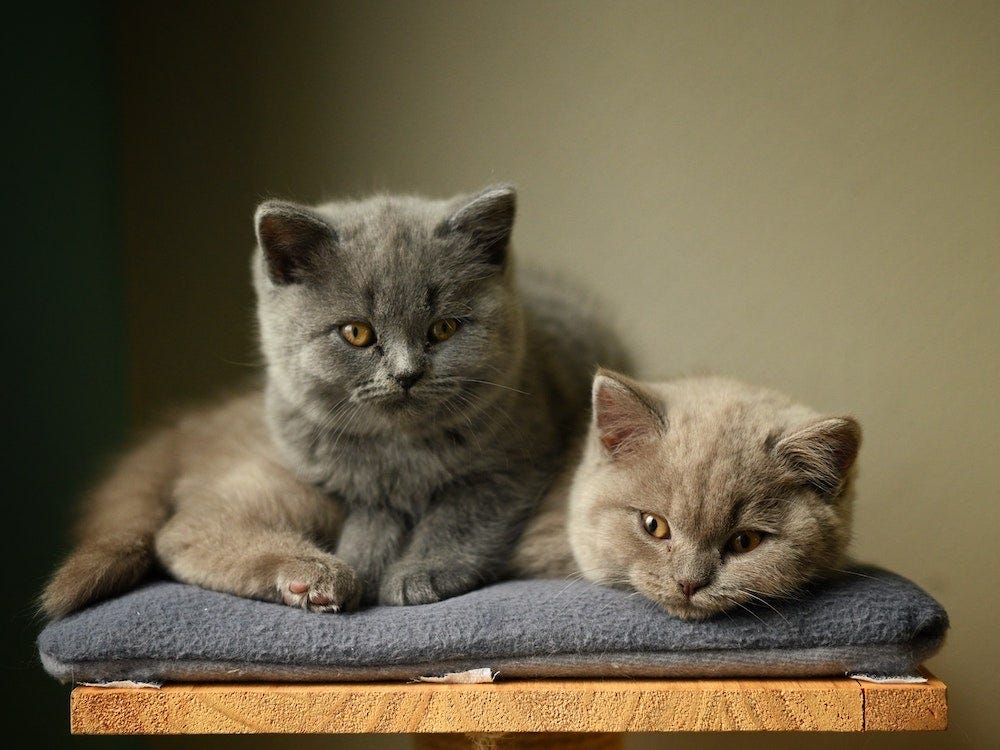
Although these cats have short hair, they look plush and fluffy. Their coats are dense, which makes their fur very soft and padded. It’s easy to picture running your fingers through their coat while reading a book or sipping on some coffee, isn’t it?
British Shorthair heads are large and round, with smaller, wide-set ears. They have round paws and very compact bodies. Their legs, tail, and body are proportionate to each other. They are very well-balanced animals.
Personality
The British Shorthair cat likes to keep a low profile, taking a bit longer than other cat breeds to open up to their humans and bond. Once they do bond with you, you have a friend for life.
These cats need lots of love and attention to learn to trust you. Having a British Shorthair means that you must put in the work and effort to build a bond with them, and it might take a little while to see the true benefits.
Soon after they bond with you, you will find them following you around to keep an eye on you and your every move. They might not get in your way and rub on your legs the entire time, but they’ll be paying attention to you from afar.
They are typically calm and quiet but, of course, love to play when the time arises. You won’t hear too much of a ruckus coming from your British Shorthair, which can be beneficial if you work from home or have small children.
British Shorthairs love a good cuddle. They let you know how much they enjoy the attention with deep, loud purring. It’s quite humorous how infatuated they can be, but can you blame them for loving the attention of their favorite people?
These cats aren’t typically “lap cats,” and if you try to force them to sit on your lap, you might be met with resistance. They aren’t too thrilled by being kissed, but they love to be pet and will encourage you to do so. They are great with other animals as long as a proper introduction is involved, and they take well to children.
Caring for a British Shorthair cat
Taking care of a British Shorthair is relatively easy. They are remarkably easygoing and will enjoy gentle grooming. It’s best to brush your British Shorthair every week so that you can collect loose fur to avoid a lot of shedding and hairballs.
Trim their nails from an early age, and consider their oral health to avoid gum disease.
Your British Shorthair will most likely be low-maintenance, and that includes playtime and activity levels. They like to play with toys and interact with their humans, just as much as they like spending time with a scratching post
Because the British Shorthair is a larger breed, they need sufficient room for their litter box. One of the main reasons that cats urinate in inappropriate places is a dirty litter box. A self-cleaning litter box like Litter-Robot cleans itself automatically, so your cat is happy to use their litter box—and you can spend more time playing with your cat instead of scooping!
Health-related issues
Just like other large breed cats, the British Shorthair is more susceptible to developing hypertrophic cardiomyopathy, which is a disease that causes the muscular walls around the heart to thicken and weaken the efficiency of the heart.
Some British Shorthairs might be prone to diabetes, requiring weight loss or medication. Routine check-ups and proper exercise and nutrition can help your fur baby live a long and happy life. Keeping an eye on troublesome symptoms is key to an early diagnosis and treatment.
Loving a British Shorthair cat or kitten
If you consider yourself to be laid-back and low-key, the British Shorthair cat will make for a great companion. You should always be prepared for your cat to develop their own unique personality and shouldn’t be surprised when they break from the norm of the breed.
Finding a pet that best fits your lifestyle is an ideal situation for the both of you—you'll want to match each other’s energies so that a bond can truly form.
Consider a British Shorthair for your next pet, and you’ll be grinning like a Cheshire Cat.
Sources:
- Hypertrophic Cardiomyopathy | Cornell University College of Veterinary Medicine
- Footnotes: The Cheshire Cat | Carleton College
- Factor IX deficiency (hemophilia B) in a family of British shorthair cats | NCBI
- British Shorthair Breed Profile | Cat-World
- British Shorthair: Full Profile, History & Care | The Spruce Pets
Photo credits:
- Boris Debusscher via Unsplash
- Frederic Christian via Unsplash
- Đồng Phục Hải Triều via Unsplash
- Rene Peters via Unsplash
- Lyo the Cat

